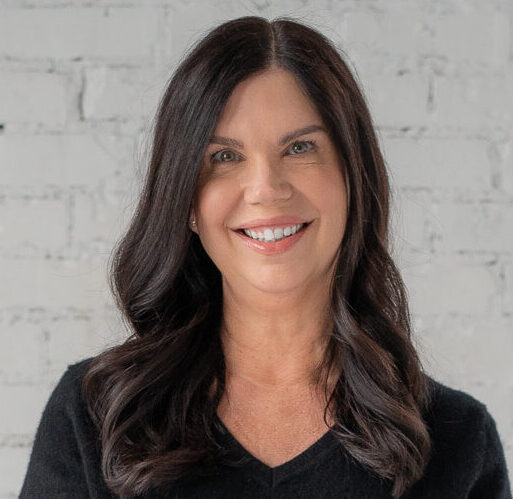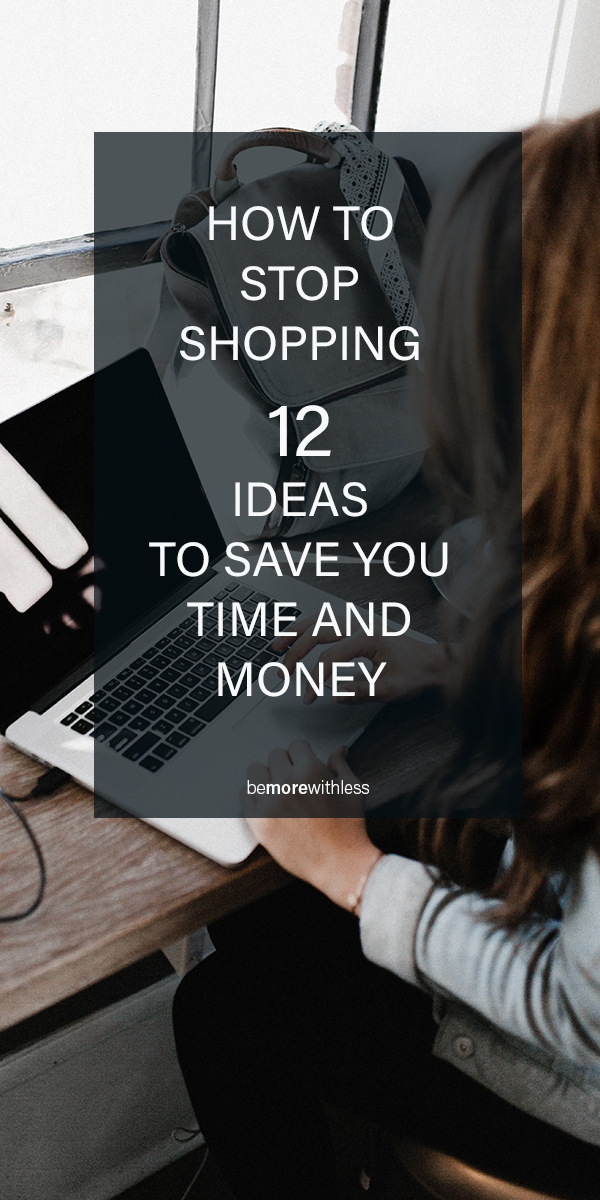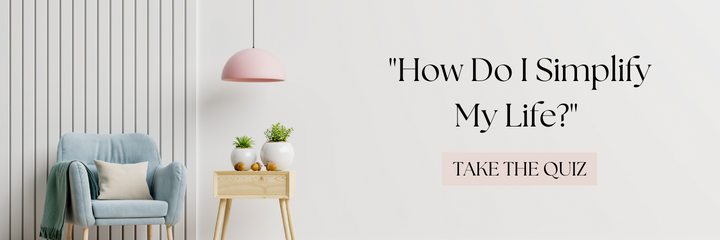Before you consider how to stop shopping, it will help to understand why you want to stop shopping or to decide if you need to stop shopping at all.
If you struggle with shopping or overspending, or just can’t resist a purchase when something catches your eye, you are not alone. Even though I’ve been intentionally living with less for years, sometimes I want something new, even though I don’t really need it. Or, if I’m not paying attention, I spend mindlessly at the grocery store or other places when I’m buying things I think I actually need. Shopping habits can be difficult to change!
Minimalism isn’t living with nothing, it’s being intentional about how you spend your time, energy, and yes … money.
<< Related Post: What is minimalism? >>
Why should you stop shopping?
If you …
- are paying off debt
- want to eliminate credit card debt
- want to cultivate more intention
- struggle with money in your relationship
- have too much clutter
- want to save money in your bank account
- are addressing a shopping addiction
- realize stuff doesn’t make you happy
- want to change your shopping habits
then stop shopping for a while.
A 30-day experiment to help you understand why you shop and if you should stop.
Buying things isn’t bad or wrong, but shopping to feel a certain way, or to prove yourself to others or because you think something will make you feel happier or more successful doesn’t work.
If you aren’t sure if you need or want to stop shopping, start by noticing your shopping habits. Pay attention to where, when and why you shop, how much you spend, and what you buy. You could estimate, but the most accurate, impactful method is to track your spending for 30 days. Carry a small notebook, and notice your shopping habits on paper. Don’t wait until the end of the day to add it up, but instead take a quick note each time you spend. Note what you spend and what you buy. For closer examination, write a few sentences about what’s going on or how you are feeling when you shop. You may be able to spot some patterns at the end of your experiment.
After tracking your spending for a month, or if you just know it’s time to stop shopping, write down your why. Why do you want to stop shopping? Do you want to trade shopping for …
- more money?
- less clutter?
- more time?
- less decision fatigue?
- more energy?
Your reason may be different, or may include all of the above. Once you’ve figured out why, write it down and keep your note handy so you can see it whenever you are tempted to shop.
P.S. If you’ve realized shopping adds value to your life and it’s not a problem, find something more inspiring to read here.
How to stop shopping: 12 ideas that will save you time and money
1. Identify the real need.
Before you buy something new because you are bored, sad, frustrated or even celebrating, identify the real need. How do you want to feel? What could you do besides shopping to feel that way? For instance, if you are frustrated, would taking a walk provide some relief?
2. Remove temptation.
Remove temptation and encouragement to shop by unsubscribing from your favorite store newsletters. Steer clear of one-click shopping. Don’t help friends shop. Stop window shopping, reading magazines, and following shopping recommendations from your favorites on social media. Where do you enjoy spending money? Don’t go there.
3. Delay.
Timing is everything, especially when it comes to an impulse purchase. Pause your purchase for 30 days and see if you are still as excited about it as you were initially. Chances are the desire will pass.
4. Try a shopping ban.
Make a commitment to stop shopping for all non-essential items for 30 days, three months or for an entire year. If your closet is the problem, try minimalist fashion challenge Project 333. You’ll dress with only 33 items of clothing, shoes, accessories and jewelry and ban shopping in those categories for 3 months.
5. Watch your excuses.
If shopping excessively is part of your daily life, when you stop, you’ll find excuses to shop. From gifts, to convincing yourself that you need something new for an upcoming event, to just in case shopping, it won’t be hard to find a loop hole. Simply pay attention and when excuses come up, revisit your why.
6. Track your spending.
If you want a big intention awakening, track your spending habits for 30 days or more. Write it all down … groceries, toiletries, coffee, dining out, clothes, school supplies, impulse purchases, online shopping. Keep another list of things you want to buy, or almost bought along with the prices. Seeing what you saved simply by writing it down will give you more joy than any shopping spree.
I tracked my spending for 30 days a few years ago and realized I spent $225 on coffee in a month. That number shocked me into changing my ways and giving back.
7. Declutter.
When you are actively decluttering and giving away things, you realize how quickly the joy of a new purchase fades. If you aren’t happy with what you already have, something new won’t make you happy for very long.
8. Location. Location. Location.
Identify where you spend money mindlessly. When you know a store too well, especially if you are a “preferred customer” you will feel more comfortable spending money. Stay out of the mall, local department stores, and other places where it feels good to spend. If an online store is courting you via a store newsletter, unsubscribe. Impulse shopping can be all too easy when it requires just a click of a button.
Where do you enjoy spending money? Don’t go there.
9. Presence.
You can’t shop your way out of the pain of the past, or shop your way into a secure future. Instead come back to right now. Do you have everything you need for today?
10. Identify spending triggers.
When do you usually shop? Do negative emotions lead to emotional spending? Is there a certain time of day that you find you’re more likely to buy things? Identify those triggers so that you can become aware of times you might feel more likely to shop.
Incorporate a few of these ideas if you want to stop shopping for a while. Becoming more intentional about how you spend your time, attention, and money will give you freedom and peace.
You don’t have to stop shopping forever, just try it for a while. Set boundaries, get clear on your financial goals, and make sure your hard earned money is being spent intentionally. All the things you want to buy will still be there in a few months, but chances are you won’t be there for them.
11. Start a “what matters” fund.
What really matters to you? If you want to become debt free, support a local charity, spend two weeks in another country, take salsa dancing lessons, build a house, or change careers, start a fund specifically for that. When you are tempted to shop, ask yourself what matters more and make an intentional decision about how you want to spend your money. New purse or dinner in Paris?
12. Gratitude.
If you aren’t happy with what you have, you won’t be happy with what you get. More stuff doesn’t equal more happiness. Keep a gratitude journal or make gratitude part of your morning practice by silently acknowledging a few things in your life that you are grateful for. As the saying goes, it’s not happiness that makes us grateful, but gratefulness that makes us happy.
When you do stop shopping, don’t judge your past behavior. Notice it, but resist making judgements or feeling badly about it. You’ve already paid enough. You’ve paid with your money, time, attention, energy and emotions. You don’t have to continue paying with guilt or other negative emotions. If you’ve decided that this is the time to stop shopping and regret a recent purchase, remember … you can return that.
Are there tools to help me stop shopping?
Implementing any of the 12 recommendations above will serve as tools to help you stop shopping. Additionally, help yourself to any of our free resources that will help you to simplify your life and reframe where happiness comes from.
If you’ve decided to change your shopping habits (or any habit), one of the best things you can do is release yourself from any guilt or shame you may be carrying for past behaviors. You don’t deserve it and it’s not helping you. Moving forward with more joy and ease will help you create new, long-lasting habits.


